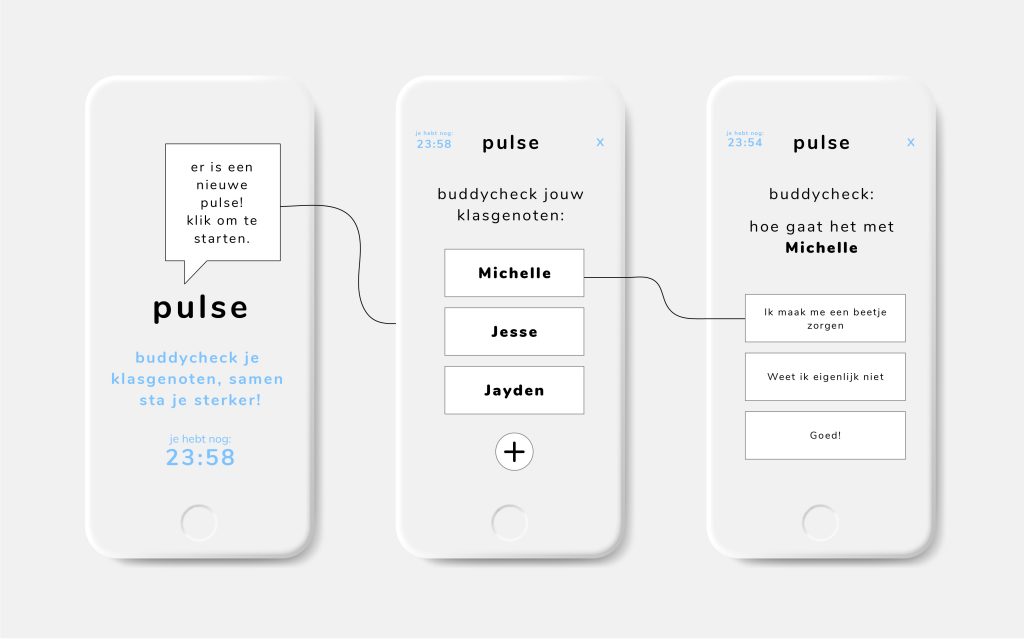Track: Professional
Team: Waarmakers
Brief D: report exploitation earlier
About No Minor Thing
What can designers do to help combat sexual exploitation of children? That is the question posed by WDCD in collaboration with the Dutch Public Prosecutions Service (OM) and the Ministry of Justice & Security in an invitation-only design challenge.
In No Minor Thing: The What Design Can Do Challenge to Combat Sexual Exploitation of Children, selected design teams had the opportunity to come up with new ways of tackling this issue. Read more on the results of the project and approach of Waarmakers.
About Pulse
The majority of sexual exploitation cases stay under the radar and are never reported. Victims become increasingly isolated by traffickers, so picking up signals early on is key. We want to use the potential of the unique perspective of classmates to help spot problems at an earlier stage.
Our concept is Pulse; a peer to peer check-up system for minors, helping classmates pick up on and act on early signals of sexual exploitation. Creating a stronger group bond in the classroom and handing minors tools to signal and cope with difficult situations they or their peers experience.

Read more on this project on the No minor thing platform >
What was it like to participate in No Minor Thing?
‘The stories about exploitation are truly chilling. Participating in No Minor Thing was quite the confrontation with a world you wouldn’t normally immerse yourself in. It is a hugely complex problem and on top of that the consequences for the victims are so severe… It is astounding to realise that this is actually going on. This motivated me to contribute to solving this problem.’
‘Designers use methods and tools to put problems into new perspectives. To view the system as a whole from a different perspective. Designers possess the skills to communicate and quickly test this new perspective.’
While working on this project, what has caught you by surprise the most?
‘I was surprised to see how difficult it is to find the right organisations, especially online, that could help a minor. Especially for a minor, who already has a couple of hurdles to take in order to recognise and identify his or her problem. We were also surprised to see that we,
all in our thirties, are having such a hard time picturing the situation of 12 to 13-year olds. This is so different from 15 to 20 years ago. Today’s children have to deal with the complexity of their social environment and the many temptationsof social media.

What role do you attribute to design when it comes to this type of social issue?
‘Designers use methods and tools to put problems into new perspectives. To view the system as a whole from a different perspective. Designers possess the skills to communicate and quickly test this new perspective.’
Do you intend to continue the project once the challenge is over?
‘Our project is currently a rough proposal, revolving around turning the dominance hierarchy upside-down, shifting the proportions. We believe this can contribute to a safer environment for children and youth. We also realise that as a design studio, we can’t do this alone. Involving parties with more experience in the industry allows us to improve and sharpen this concept. We are talking to several parties about developing this concept further.’
